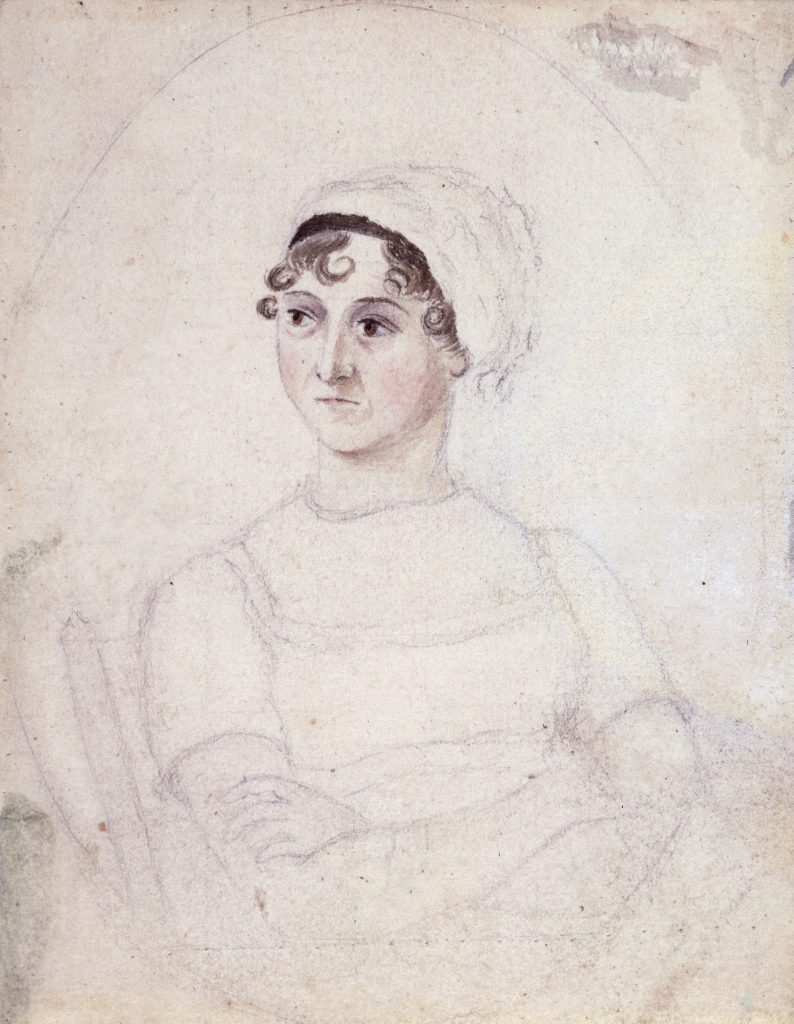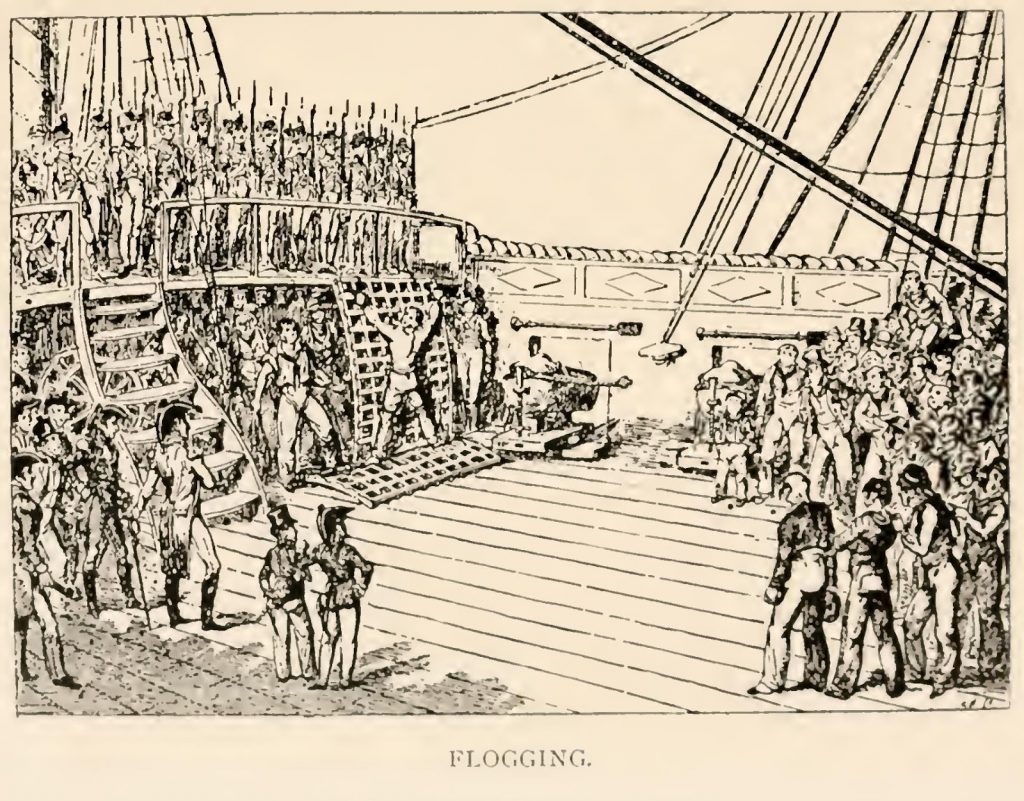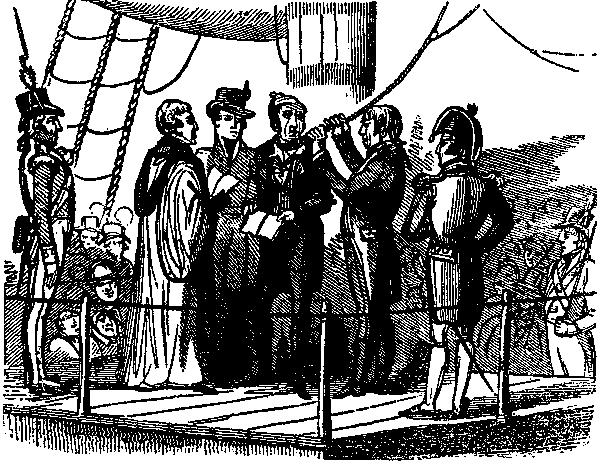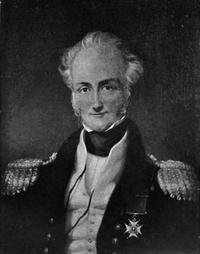Seth Stein LeJacq
Jane Austen’s 1814 Mansfield Park contains an interesting little naval pun, one that has attracted a fair bit of attention from modern observers because it may be about anal sex. It comes in Chapter 6, when Mary Crawford declares: “Certainly, my home at my uncle’s brought me acquainted with a circle of admirals. Of Rears and Vices, I saw enough. Now do not be suspecting me of a pun, I entreat.”

The pun plays on the name of two senior naval ranks, “Rear Admiral” and “Vice Admiral.” The Royal Navy had a massive presence in contemporary life and culture, and so the wordplay, underlined as it was, would have been clear to nineteenth-century readers.
What exactly is the joke here, though? To modern eyes, the possibility that it might refer to anal sex, “sodomy,” seems plausible. Then, as now, “rear” could refer to the buttocks or backside, and “vice” to sexual misbehavior. This possibility has generated a great deal of thought and discussion, and quite a lot of disagreement. Consider, for instance, this 2001 letter to the Telegraph, “Jane Austen prefers the lash to sodomy.” Responding to Caroline Moore’s review of Carol Shield’s Jane Austen (2001), the writer insists that the pun must refer to the so-called vice Anglais, erotic flagellation, rather than sodomy.
Scholars have yet to find evidence to settle this question definitively. They probably never will. Ambiguous as it is, though, her pun can still open a window onto the frequently misunderstood topic of naval sodomy—especially when considered alongside the previously unknown history of her naval brothers’ involvement in sodomy trials. Francis (1774-1865) and Charles (1779-1852) Austen served separately on at least ten naval courts trying sex crimes before 1840. Their stories reveal just how likely naval personnel were to encounter sodomy in one way or another, and just how likely civilians like Jane were to know about it.

In practice, Royal Navy courts martial rarely tried any sexual crimes except for male homoerotic offenses. At this time all same-sex erotic contact was, in theory, illegal. Penetrative anal sex was a felony carrying a mandatory capital punishment. Any other contact constituted a misdemeanor, and could result in corporal punishment and other harsh sanctions.

These naval sodomy trials were far more common and publicly visible than modern observers have realized. Between 1690 and 1900, the force prosecuted over 490 cases, many involving more than one defendant. The Regency era was the historical high point for cases in both absolute and per capita terms. Between 1795 to 1837 the navy held over 180 trials for same-sex contact.
The navy’s relative rate of prosecution was also high. At periods through the eighteenth century it tried more men for same-sex crimes than did the London criminal courts. The navy was one of the most active sites for the legal repression of sodomy not only in the English-speaking world, but also in western Europe.
The seagoing Austens had successful careers, with Charles rising to Rear Admiral and Francis Admiral of the Fleet. Given that success, they came to sit on courts martial as a matter of course. These courts were composed on the basis of rank and seniority, and required between five and thirteen officers at the rank of commander or above to convene. Courts martial were large undertakings, requiring substantial manpower, so that a huge number of navy men came into direct contact with these cases.

Consider just the officers who composed these courts, representing only a fraction of the personnel involved in cases. Over 650 officers sat on navy courts trying such crimes between 1796 and 1840. Francis and Charles, who even served as a court president in one instance, were not at all unusual.
Britons back on land took an avid interest in these cases as well. They could follow them in the periodical press, which turned out thousands of items on maritime sodomy. The press covered the 1807 prosecution of Lieutenant William Berry of the Hazard sloop, for instance, in close detail, with dozens of pieces tracking events from allegation to execution.
A defendant in one of the cases Charles Austen tried referred explicitly to the frequency of such coverage, lamenting in his defense that “officers in the Navy are too frequently accused of acts tending to the commission of unnatural offenses… [H]ow frequent are the reports we are doomed at the present day, with grief, to peruse in the public prints.”
What kind of cases did the Austen brothers consider? Francis had more experience with these trials, having served on over a half dozen courts trying sodomy cases before 1840. These included an 1811 case involving a sailor named Patrick Muleraty that set a notable precedent in sodomy law and was cited widely in later legal texts, as I have described elsewhere. He was also on the court in the legally significant 1812 case of Lieutenant Charles Clark Dobson, which involved a difficult jurisdictional question.
Charles, meanwhile, participated in fewer trials. In 1839 he was one of ten officers who considered the fate of Lieutenant Don Philip Dumaresq, the defendant quoted above bemoaning press coverage. The officer had been accused of having taken indecent liberties with three young men. In 1826, Charles, then captain of the Aurora and second-in-command at the Jamaica Station, served as president of a small court martial trying the purser of the Bustard sloop, Samuel Armstrong. The charge was taking indecent liberties with James Field, a member of the carpenter’s crew, and the court found Armstrong guilty and dismissed him from the service. Charles even had the distinction of serving on a court that considered one of the exceedingly rare prosecutions of a navy man, midshipman Joseph Sheppard in this case, for a sexual crime against a girl or woman.
The cases the Austen brothers helped try are largely representative of navy sex crimes trials in this period. The defendants include enlisted men and officers—though senior officers never faced these sorts of prosecutions. Some were convicted; some acquitted. Francis and Charles had a hand in sentencing at least five people to death for erotic contact. For instance, George Wilkins, an ordinary seaman, was hanged in 1812 for raping a boy named John Gouge. Francis served on the court that sent him to his death.
Francis was also a member of the court that passed capital sentences on John Batty and Thomas Smith. These two young sailors—eighteen and sixteen years old—were caught in the act during what the court determined was a consensual sexual encounter. In a petition to the Commander-in-Chief of the Jamaica Station the two begged for their lives and pointed to their youth. But they were old enough to be convicted, and the navy sometimes executed even younger convicts.
All but two of these trials took place before the publication of Mansfield Park. That fact alone cannot determine whether Austen’s intriguing pun refers to sodomy. Whatever her intent, though, nineteenth-century readers certainly could have seen a sodomy joke. Naval sodomy was highly visible. People read, wrote, spoke, and, yes, joked about it frequently. And some, like Jane Austen’s brothers and hundreds of their fellow officers, considered the topic in great detail.
Relevant trials involving the Austens
(All from the National Archives, UK)
John Batty and Thomas Smith: 27 February 1806, ADM 1/5372
Nicholas Alexander: 10 January 1811, ADM 1/5412
John Powell: 3 September 1811, ADM 1/5418
Patrick Muleraty: 17 September 1811, ADM 1/5418
Charles Clark Dobson: 20 January 1812, ADM 1/5423
George Wilkins: 13 November 1812, ADM 1/5432
Joseph Sheppard: 2 November 1813, ADM 1/5439
Thomas Gunton: 29-30 March 1813, ADM 1/5435
Samuel Armstrong: 15-16 December 1826, ADM 1/5470
Don Philip Dumaresq: 28 February-2 March 1839, ADM 1/5485
 Seth Stein LeJacq is a Molina Fellow in the History of Medicine at the Huntington Library and a Lecturing Fellow at Duke University. A historian of medicine, his work focuses on gender, sexuality, and the body in early modern Europe. He is writing a book on the history of sodomy prosecutions in the sailing Royal Navy and researching sexual forensics in the anglophone world before 1800.
Seth Stein LeJacq is a Molina Fellow in the History of Medicine at the Huntington Library and a Lecturing Fellow at Duke University. A historian of medicine, his work focuses on gender, sexuality, and the body in early modern Europe. He is writing a book on the history of sodomy prosecutions in the sailing Royal Navy and researching sexual forensics in the anglophone world before 1800.

NOTCHES: (re)marks on the history of sexuality is licensed under a Creative Commons Attribution-NonCommercial-NoDerivatives 4.0 International License.
Based on a work at www.notchesblog.com.
For permission to publish any NOTCHES post in whole or in part please contact the editors at NotchesBlog@gmail.com





While I like Jane Austen–her era, the Regency; and I loved the movie ‘Sense And Sensibility’–the delightful pocket novella ‘Mansfield Park’ is her only work I’ve read in its entirety. It was a comforting foil for a real-life heartache with someone way too modern.